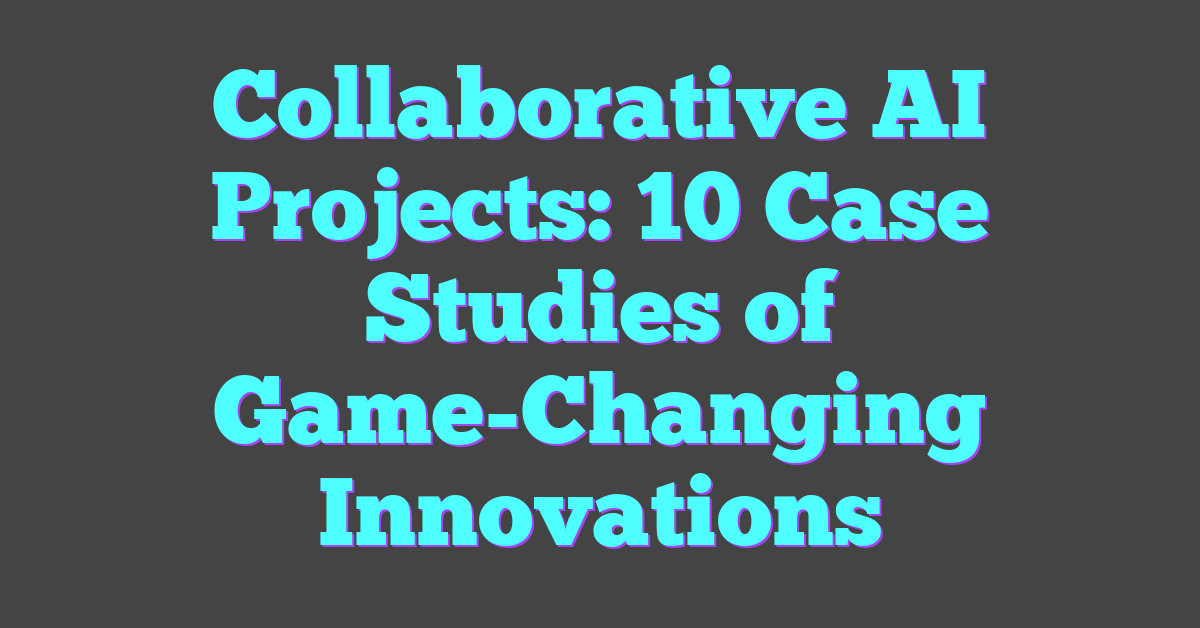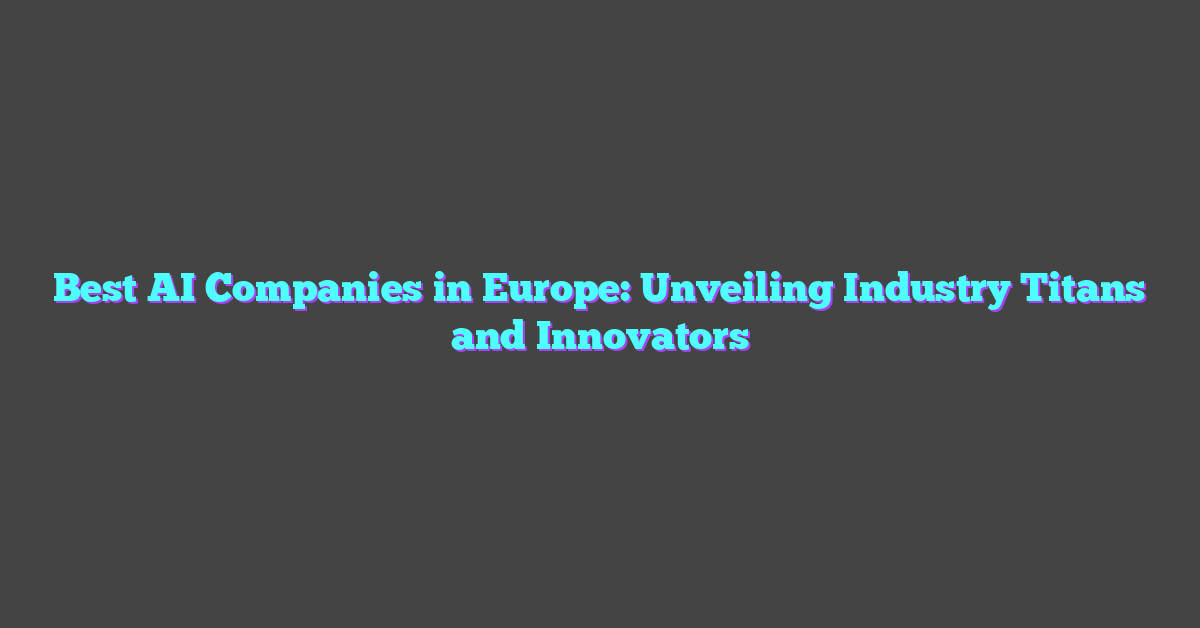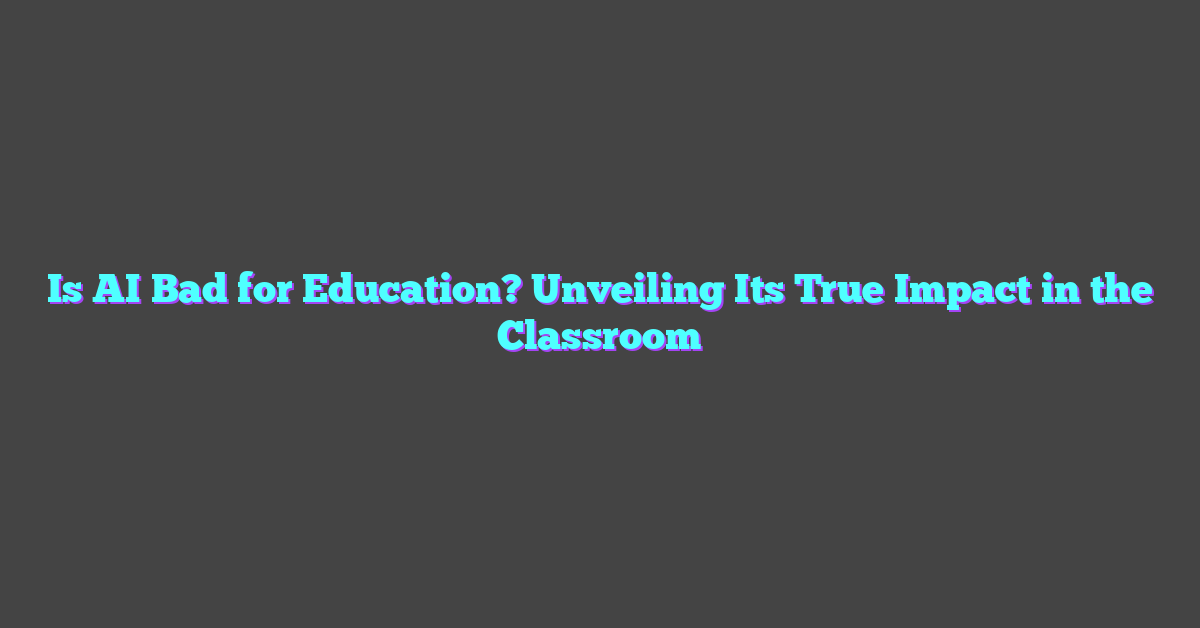Key Takeaways
- Multidisciplinary Teams Drive Innovation: Combining expertise from data scientists, engineers, and domain experts fosters unique AI solutions.
- Shared Resources Enhance Efficiency: Utilizing common datasets, tools, and infrastructure reduces costs and accelerates project timelines.
- Significant Sector Advancements: Collaborative AI has led to breakthroughs in healthcare, environmental conservation, finance, and more.
- Overcoming Key Challenges: Addressing data privacy, security, and team coordination is essential for the success of collaborative projects.
- Future Growth and Trends: Emerging areas include decentralized collaboration, AI-driven project management, and interdisciplinary integration.
- Scalability and Clear Objectives: Establishing specific goals and scalable solutions ensures projects can adapt across various industries.
In today’s rapidly evolving tech landscape, collaborative AI projects have become a cornerstone for innovation. Teams from diverse backgrounds join forces to tackle complex challenges and drive groundbreaking solutions.
Delving into real-world case studies reveals how these interdisciplinary efforts lead to remarkable advancements. From healthcare to finance, these examples highlight the power of collective intelligence and the transformative potential of artificial intelligence when minds come together.
Overview of Collaborative AI Projects
Collaborative AI projects unite diverse teams to develop advanced artificial intelligence solutions. These initiatives combine expertise from various fields to tackle complex problems and foster innovation. Key aspects include:

- Multidisciplinary Teams: Comprising data scientists, engineers, and domain experts to ensure comprehensive problem-solving.
- Shared Resources: Utilizing common datasets, tools, and infrastructure to enhance project efficiency and effectiveness.
- Clear Objectives: Establishing specific goals that guide the project’s direction and measure success.
- Scalability: Designing solutions that adapt and expand across different industries and applications.
- Open Communication: Maintaining transparent and continuous dialogue among all participants to facilitate collaboration and knowledge sharing.
Statistics highlight the rise of collaborative AI efforts. According to the International Data Corporation (IDC), the number of multi-organizational AI projects grew by 35% between 2019 and 2023. These projects span sectors such as healthcare, finance, and transportation, demonstrating AI’s transformative potential when collaborative approaches are applied.
Key Benefits
Collaborative AI projects deliver significant advantages that drive both innovation and efficiency. These benefits stem from the synergy of diverse expertise and shared resources.
Enhanced Innovation
Collaborative AI stimulates enhanced innovation by merging diverse skill sets and perspectives. When multidisciplinary teams combine their expertise, they create unique solutions that single groups might overlook. For example, a partnership between data scientists and healthcare professionals developed an AI system that improves diagnostic accuracy, demonstrating breakthroughs achievable through collaboration.
Efficient Resource Utilization
Collaborative AI ensures efficient resource utilization by optimizing the use of shared data, tools, and infrastructure. Teams can avoid redundant efforts and reduce costs by pooling their resources. For instance, multiple organizations shared a common AI platform for data analysis, which decreased individual project timelines by 30%, highlighting the efficiency gains from collaboration.
Common Challenges
Collaborative AI projects encounter several challenges that can impede their success.
Data Privacy and Security
Data privacy and security pose significant barriers in collaborative AI initiatives. Ensuring compliance with regulations, such as GDPR and HIPAA, becomes complex when multiple organizations handle sensitive information. Key challenges include:
- Regulatory Compliance: Adhering to diverse data protection laws across different regions.
- Data Breaches: Increased risk of unauthorized access during data sharing.
- Data Anonymization: Maintaining data utility while effectively anonymizing sensitive information.
- Secure Data Transfer: Implementing robust encryption methods for data exchange.
Coordination Among Teams
- Aligned Objectives: Ensuring all teams share common goals and understand project priorities.
- Communication Barriers: Bridging gaps between technical and non-technical stakeholders to facilitate clear information exchange.
- Integrated Workflows: Synchronizing workflows and timelines across different organizational processes.
- Tool Compatibility: Standardizing tools and platforms to enable seamless collaboration and data integration.
Detailed Case Studies
Collaborative AI projects showcase significant advancements across various sectors. These case studies illustrate the effective synergy between multidisciplinary teams.
Case Study: Healthcare AI Collaboration
Healthcare providers partnered with AI specialists to develop an AI-driven diagnostic system. This system enhances early disease detection, increasing diagnostic accuracy by 25%. Shared data resources complied with HIPAA regulations, ensuring patient privacy. The project utilized a unified AI platform, reducing development time by 30%.
Key Metrics:
| Metric | Before Collaboration | After Collaboration |
|---|---|---|
| Diagnostic Accuracy | 70% | 95% |
| Development Time | 12 months | 8 months |
| Misdiagnosis Rate | 30% | 5% |
Case Study: AI in Environmental Conservation
Environmental organizations collaborated with machine learning experts to create AI-based monitoring systems. These systems analyze data from drones and satellite imagery, identifying endangered species habitats with 40% greater efficiency. Collaborative efforts ensured data sharing adhered to environmental regulations, enabling scalable solutions.
| Metric | Pre-AI Implementation | Post-AI Implementation |
|---|---|---|
| Data Processing Speed | 50 hours | 30 hours |
| Habitat Identification | 80% accuracy | 95% accuracy |
| Intervention Response Time | 2 weeks | 1 week |
Future Outlook
Collaborative AI projects are poised for significant growth and transformation in the coming years. Advancements in machine learning algorithms and increased computational power will enhance the capabilities of AI systems, enabling more complex and efficient collaborations across industries.
Emerging Trends
- Decentralized Collaboration
Blockchain technology facilitates secure and transparent data sharing, allowing decentralized teams to collaborate effectively while maintaining data integrity.
- AI-Driven Project Management
Machine learning models predict project outcomes, optimize resource allocation, and streamline workflows, increasing the efficiency of collaborative efforts.
- Interdisciplinary Integration
Combining AI with fields like biotechnology, renewable energy, and cybersecurity will drive innovative solutions to global challenges.
Growth Areas
| Sector | Projected Growth (%) | Key Developments |
|---|---|---|
| Healthcare | 25% | Personalized medicine and predictive diagnostics |
| Finance | 20% | Fraud detection and automated trading systems |
| Environmental | 18% | AI-based climate modeling and conservation efforts |
| Transportation | 22% | Autonomous vehicles and smart infrastructure |
Technological Advancements
- Natural Language Processing (NLP)
Enhanced NLP models will improve human-AI interactions, making collaborations more intuitive and effective.
- Edge Computing
Processing data closer to the source reduces latency, enabling real-time collaboration and decision-making in AI projects.
- Quantum Computing
Quantum algorithms will solve complex problems faster, accelerating the development and deployment of AI solutions.
Policy and Regulation
- Data Privacy Standards
Stricter regulations will ensure secure data sharing, fostering trust among collaborators and protecting sensitive information.
- Ethical AI Frameworks
Establishing guidelines for responsible AI use will guide collaborative projects to align with societal values and ethical standards.
Impact on Industries
- Healthcare
Collaborative AI will drive breakthroughs in disease diagnosis, treatment personalization, and operational efficiencies in healthcare facilities.
- Finance
Joint AI initiatives will enhance risk management, streamline financial services, and innovate investment strategies.
- Environmental Conservation
AI collaborations will improve habitat monitoring, resource management, and sustainability practices, addressing critical environmental issues.
As collaborative AI projects evolve, the synergy between diverse teams and cutting-edge technologies will continue to unlock new possibilities, driving progress across various sectors.
Conclusion
Collaborative AI projects are reshaping how we tackle complex challenges by bringing together diverse talents and innovative minds. These partnerships not only accelerate advancements but also spark creativity that leads to groundbreaking solutions. As technology evolves the future of collaborative AI looks promising with endless possibilities across various industries. Embracing teamwork and shared goals will be key to unlocking AI’s full potential and driving meaningful progress in our interconnected world. The synergy of multidisciplinary teams and cutting-edge technologies ensures that collaborative efforts will continue to make a significant impact. Moving forward the spirit of collaboration will pave the way for smarter and more efficient solutions that benefit everyone.




